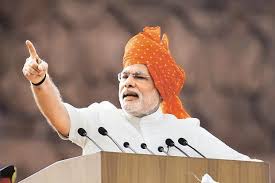India’s Global Rankings in 2025: A Decade of Progress and Paradoxes

India’s ascent on the world stage is marked by impressive achievements, persistent challenges, and intriguing contrasts. As of 2025, the nation’s global rankings across a spectrum of economic, social, and geopolitical indicators paint a nuanced portrait of a country in transition—one that is rapidly modernizing, yet still grappling with deep-rooted issues. Let’s break down India’s performance on ten key global indices and what these rankings reveal about the world’s most populous democracy.
1. 1st in ICT Services Exports: The Digital Powerhouse
India has firmly established itself as the world’s top exporter of ICT (Information and Communication Technology) services. According to the World Bank, ICT service exports accounted for over 48% of India’s total service exports in 2023, a figure that continues to rise1. This includes software, computer services, telecommunications, and information-related services. The country’s robust IT sector, led by giants like TCS, Infosys, and Wipro, has not only generated millions of jobs but also positioned India as a global leader in digital transformation.
The success is rooted in India’s large pool of skilled engineers, competitive costs, and a thriving startup ecosystem. The government’s Digital India initiative and investments in digital infrastructure have further accelerated this growth. As businesses worldwide continue to digitize, India’s dominance in ICT services is expected to remain unchallenged for years to come.
2. 1st in Global Remittances Inflow: The World’s Family Bank
India remains the world’s largest recipient of remittances, with inflows reaching a record $118.7 billion in 2023-242. These funds, sent by the vast Indian diaspora, are a vital source of foreign exchange and play a crucial role in supporting millions of families back home. The United States has emerged as the top source, accounting for nearly 28% of all remittances, followed by the UAE, UK, and other advanced economies.
Interestingly, while the Gulf countries have historically been major contributors, their share has declined as more skilled Indian workers move to developed countries. This shift reflects India’s growing global workforce in high-value sectors, from technology to healthcare.
3. 4th in Global Firepower Index: A Military Giant
India is ranked 4th globally in the 2025 Global Firepower Index, underscoring its status as a major military power3. With significant investments in defense modernization, indigenous manufacturing, and a large standing army, India’s military strength is formidable. The country is also the fourth-largest military spender in the world, reflecting its strategic priorities amid a complex regional security environment.
However, India’s reliance on arms imports (see point 9) highlights the need for further self-reliance in defense production.
4. 29th in Global Soft Power: Cultural Influence on the Rise
India’s soft power—its ability to shape global perceptions through culture, values, and diplomacy—has seen steady growth. Ranked 29th in the Brand Finance Global Soft Power Index 2025, India shines in areas like arts, entertainment, and spiritual influence4. Its global appeal is powered by Bollywood, yoga, cuisine, and a vibrant diaspora.
However, the nation slipped one spot from last year, suggesting there’s room for improvement in international relations and brand perception. India’s growing reputation for future growth potential and cultural exports continues to strengthen its global influence.
5. 35th in Future Possibilities: Ready for Tomorrow
India’s position as 35th in the Future Possibilities Index reflects its status as a “future skills contender.” The QS World Future Skills Index 2025 places India second globally in job market readiness for the future—especially in AI, digital, and green skills—but its overall ranking is lower due to gaps in academic readiness and economic transformation5.
India’s young population is a major asset, offering unique opportunities for innovation and growth. Government efforts to upskill youth and promote technology-driven industries are beginning to pay off, but more investment is needed in education and research to climb higher.
6. 39th in Global Innovation Index: A Rising Innovator
India’s innovation ecosystem is gaining global recognition, ranking 39th among 133 economies in the 2024 Global Innovation Index6. This marks a leap of 42 places since 2015, highlighting the country’s progress in research, entrepreneurship, and technology.
India leads among lower-middle-income economies and excels in knowledge and technology outputs. The government’s focus on startups, digital infrastructure, and intellectual property rights has fostered a more dynamic environment for innovation. However, challenges remain in translating research into large-scale commercial success.
7. 126th in World Happiness Index: The Paradox of Progress
Despite economic and technological advances, India ranks a low 118th out of 147 countries in the 2025 World Happiness Report, though some sources report it as 126th81214. The index, based on self-assessed life satisfaction, highlights persistent challenges in social support, freedom, health, and perceived corruption.
While India’s strong family and community ties are a strength, issues like inequality, limited freedom, and corruption drag down the overall happiness score. The contrast between rapid economic growth and relatively low happiness underscores the need for more inclusive, people-centric development.
8. 151st in World Press Freedom Index: A Troubling Trend
India’s press freedom ranking has seen a slight improvement, moving up to 151st out of 180 countries in 2025, but remains in the “very serious” category913. The Reporters Without Borders (RSF) index highlights ongoing concerns about media independence, government pressure, and legal challenges faced by journalists.
Compared to its neighbors, India fares poorly, signaling deeper issues around freedom of expression and democratic accountability. While the digital media landscape is vibrant, the environment for traditional journalism remains fraught with risks.
9. 1st in Arms Imports: Security at a Cost
India continues to be one of the world’s largest importers of major arms, accounting for 8.3% of global arms imports in 202410. Although the country is making strides in domestic defense production, its reliance on foreign suppliers—primarily Russia, France, Israel, and the US—remains high.
Efforts to diversify suppliers and boost indigenous manufacturing are underway, but the transition is gradual. The high level of arms imports reflects India’s security concerns in a volatile region, but also highlights the need for greater self-reliance.
10. 4th in World GDP: An Economic Powerhouse Emerges
India has surpassed Japan to become the world’s fourth-largest economy, with a nominal GDP of $4.19 trillion in 20257. This milestone is a testament to India’s sustained economic growth, demographic dividend, and expanding middle class.
The country’s per capita income has doubled in the last decade, and forecasts suggest India could become the third-largest economy within a few years. However, the large informal sector and persistent inequality mean that the benefits of growth are not evenly distributed.
Conclusion: India’s Global Rankings—A Story of Contrasts and Opportunity
India’s 2025 global rankings reveal a country of striking contrasts:
- A digital and economic powerhouse, yet struggling with happiness and press freedom.
- A leader in innovation and future skills, but still working to translate potential into widespread prosperity.
- A military and cultural giant, but facing challenges in democratic freedoms and social well-being.
These rankings are not just numbers—they reflect the lived realities of over 1.4 billion people. India’s journey is one of ambition, resilience, and transformation. As the nation continues to rise, the focus must shift towards inclusive growth, stronger institutions, and greater freedoms to ensure that its global achievements translate into a better quality of life for all its citizens.




